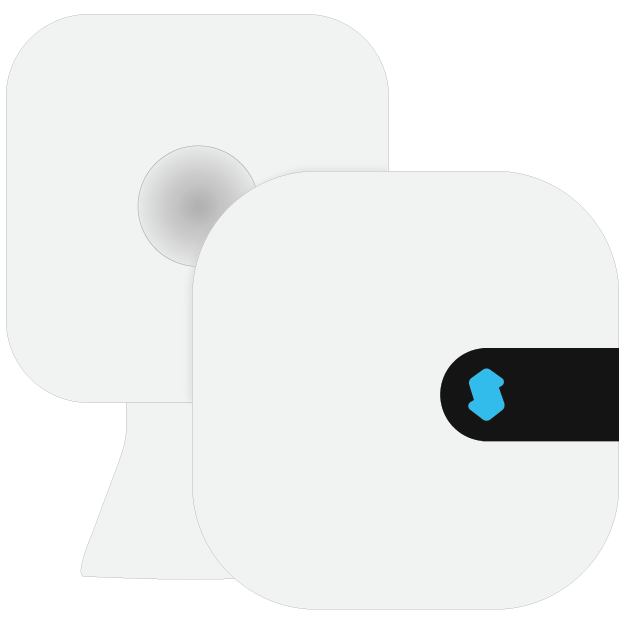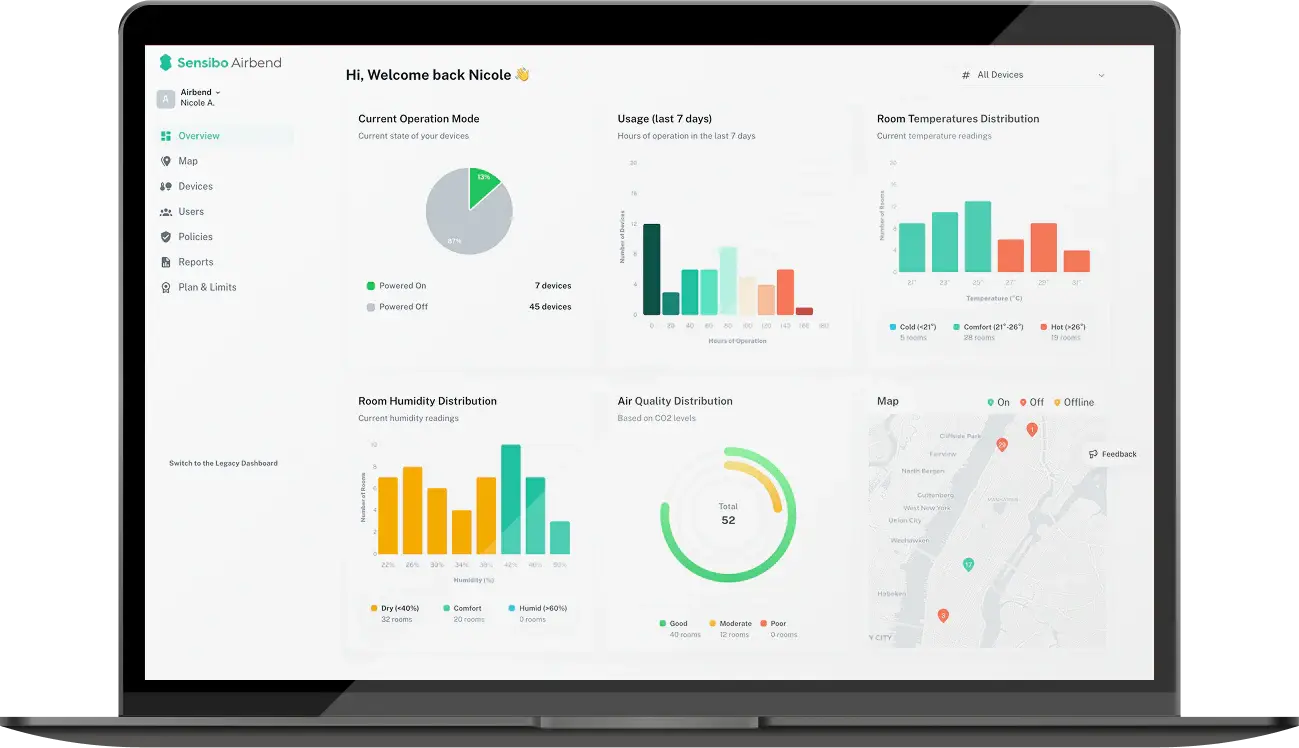How Do Smart Thermostats Save Energy? A Full Guide
Smart technology transforms home climate control beyond basic programmable thermostats. By analyzing patterns and adapting to household routines, these devices optimize energy consumption while maintaining comfort. Research shows smart thermostats can generate significant energy savings - often reducing heating and cooling costs by 10-15% annually.
These intelligent systems leverage sensors, automation, and machine learning to fine-tune temperature adjustments. Rather than relying on fixed schedules or manual inputs, they create dynamic profiles based on occupancy, weather patterns, and user preferences. This responsive approach eliminates inefficient operation during vacant periods while ensuring spaces reach optimal temperatures when needed.
How Smart Thermostats Save Energy?
Smart devices revolutionize heating and cooling through learning algorithms and automation, optimizing energy usage for maximum financial benefits.
Learning & Adaptive
Scheduling Smart thermostats analyze household patterns to create custom temperature profiles. According to Energy Star studies, this smart scheduling alone can reduce HVAC energy use by 8%. The system tracks when occupants wake up, leave home, and return, automatically adjusting settings to prevent unnecessary runtime. For example, a smart thermostat might learn that weekday mornings require heating at 6:30 AM, but weekends can wait until 8 AM, saving two hours of peak-time energy consumption.
Geofencing & Occupancy
Detection Built-in sensors detect presence and movement while geofencing monitors smartphone locations. Studies by Nest show this feature saves an average of 10-12% on heating and 15% on cooling bills. The system creates an invisible boundary around your home - when the last person crosses it, the thermostat automatically switches to eco-mode. Occupancy sensors provide backup verification, ensuring empty rooms don't waste energy usage.
Weather Integration
Systems factor in local weather forecasts, humidity levels, and seasonal changes to optimize performance. Smart thermostats can pre-cool homes before heat waves or adjust humidity control based on incoming weather patterns. This predictive capability prevents system strain during extreme conditions and has shown 5-10% additional financial benefits through reduced peak-time usage.
Usage Analytics
Detailed reports highlight consumption patterns and suggest optimization opportunities. Users receive monthly efficiency scores, comparing their usage to similar homes in their area. These insights help identify unusual patterns - like frequent manual overrides or excessive night-time cooling - that might indicate system inefficiencies.
Remote Control & Automation
Mobile apps provide anywhere access to schedule changes and temperature adjustments. Research indicates that remote management prevents an average of 3 hours of unnecessary HVAC operation per week. Integration with smart home platforms enables automated responses to various triggers, like adjusting temperatures when security systems are armed or windows are opened.
.jpg?width=800&height=400&name=65158%20(1).jpg)
Energy Savings & Cost Benefits
Smart thermostats slash energy bills through precision control and automation. Research by the Environmental Protection Agency reveals average households save $130-200 annually. During peak summer months, cooling costs typically drop 15-23%, while winter heating expenses decrease 10-12% compared to manual thermostats.
Advanced algorithms eliminate energy waste by optimizing HVAC cycles. Smart Recovery technology calculates optimal start times, reducing system runtime by 15-20 minutes per cycle. Occupancy-based adjustments prevent heating and cooling empty spaces, saving an additional 5-8% of energy daily.
Long-Term Value Proposition
The financial benefits extend far beyond monthly utility savings:
Investment Return
- Initial cost: $130-300
- Average payback period: 12-18 months
- Utility rebates: Up to $100
- Extended HVAC lifespan: 2-3 years
Operational Efficiency
- 33% reduction in temperature fluctuations
- 20% decrease in system cycling
- 15% lower maintenance needs
- 8-12% improvement in overall HVAC efficiency
Real Estate Impact Smart thermostats increase property value by $100-300. Studies show that 68% of home buyers specifically look for smart climate control features, making these devices valuable additions for resale.
Comparative Analysis Traditional vs. Smart Thermostats (Annual Figures):
- Energy Cost: $1,500 vs. $1,200
- Temperature Variance: ±3°F vs. ±1°F
- Manual Adjustments: 1,460 vs. 180
- System Runtime: 3,650 hours vs. 2,920 hours
Best Practices for Maximizing Energy Efficiency
Setting Strategic Temperature Profiles
Fine-tune temperature settings based on household patterns and seasonal changes. Program morning temperatures to adjust 20-30 minutes before wake-up, allowing gradual warming or cooling. Evening setbacks should initiate 60 minutes before bedtime when body temperatures naturally decrease. Maintain an energy-saving differential of 7-10°F between occupied and vacant periods.
Leveraging Advanced Features for Energy Efficiency
Enable geofencing with custom radius settings (recommended: 0.25-0.5 miles) for precise control. Configure motion sensors' sensitivity based on room layout and activity levels. Smart thermostats excel when connected to multiple household devices, creating a comprehensive comfort system that adapts to real-time conditions.
Maintenance and Updates
Modern programmable thermostats require systematic care:
System Maintenance:
- Monthly firmware updates ensure security and feature improvements
- Quarterly sensor cleaning prevents dust interference
- Bi-annual battery checks prevent unexpected shutdowns
- Weekly efficiency report reviews identify optimization opportunities
- Seasonal temperature calibration maintains accuracy within ±1°F
Smart Integration Optimization:
- Link with weather services for predictive temperature adjustments
- Connect to home security systems for occupancy-based control
- Enable smart ventilation control when available
- Configure HVAC zoning for room-specific comfort
- Set up IFTTT automation for custom scenarios
Data Analysis and Adjustment:
- Monitor room-specific temperature variations
- Track humidity levels against comfort preferences
- Compare energy usage across different seasons
- Analyze peak usage periods for potential adjustments
- Review automation effectiveness monthly
Temperature Optimization Tips:
- Summer cooling: Start at 78°F, adjust for comfort
- Winter heating: Begin at 68°F during occupied hours
- Humidity control: Maintain 30-50% range
- Temperature ramping: Use 2-3°F increments
- Night setback: Program 4°F changes maximum
.jpg?width=800&height=400&name=131551%20(1).jpg) Common Myths & Misconceptions
Common Myths & Misconceptions
"Smart Thermostats Are Too Complex"
Today's smart climate control prioritizes simplicity. Sensibo's interface guides users through setup and daily operations with clear instructions and visual aids. Most customers master essential features within 48 hours. The mobile app provides intuitive controls and helpful tooltips, making advanced functions accessible when users feel ready to explore them.
"They're Only for New HVAC Systems"
Smart thermostats work with most heating and cooling systems manufactured after 2000. Sensibo devices support various system types, from central air conditioning to mini-split units and baseboard heating. Pre-installation compatibility checks ensure proper functionality with existing equipment, eliminating uncertainty about system matching.
"Constant Wi-Fi Connection Required"
While the internet enables remote access and data analysis, smart thermostats maintain core functions offline. Local storage preserves programmed schedules, temperature preferences, and basic automation rules. Systems continue operating during network interruptions, seamlessly syncing data when connection resumes.
"Manual Adjustments Defeat the Purpose"
Smart thermostats use manual inputs to enhance their learning algorithms. Each adjustment helps refine comfort preferences and identify pattern changes. These modifications contribute to smarter, more personalized automation as the system learns from user behavior and preferences over time.
"Savings Are Minimal"
Research contradicts this myth with substantial evidence. Users typically save $180-$250 annually, with peak season reductions reaching 15-23%. Sensibo users consistently report significant cost reductions through automated optimization, achieving full return on investment within 12-18 months, enhanced by available utility rebates up to $100.
"Professional Installation Required"
Sensibo prioritizes DIY-friendly design with step-by-step mobile guidance. Most users complete installation within 15-30 minutes without special tools. Video tutorials and free technical support ensure smooth setup, though professional installation remains optional for those preferring expert assistance.
"Smart Features Only Work in Connected Homes"
Sensibo thermostats operate independently of other smart devices. Core features like learning algorithms, occupancy detection, and temperature optimization work effectively in any home environment. While integration with other smart devices can enhance functionality, it's not required to achieve significant energy savings and comfort improvements.
Smart Climate Control: A Revolution in Energy Management
Smart thermostats deliver measurable energy savings through advanced technology and intelligent automation. These devices transform home climate control by learning, adapting, and optimizing based on real data.
Research proves their effectiveness - average households reduce HVAC costs by 10-23% annually while maintaining superior comfort. Integration with modern smart home systems further enhances their capabilities, making them essential for energy-conscious homeowners.
The shift to smart climate control represents both immediate cost benefits and long-term environmental impact. By choosing intelligent temperature management, homeowners invest in efficiency while contributing to broader energy conservation goals.


































.jpg)

.jpg?height=200&name=2147959972%20(1).jpg)

